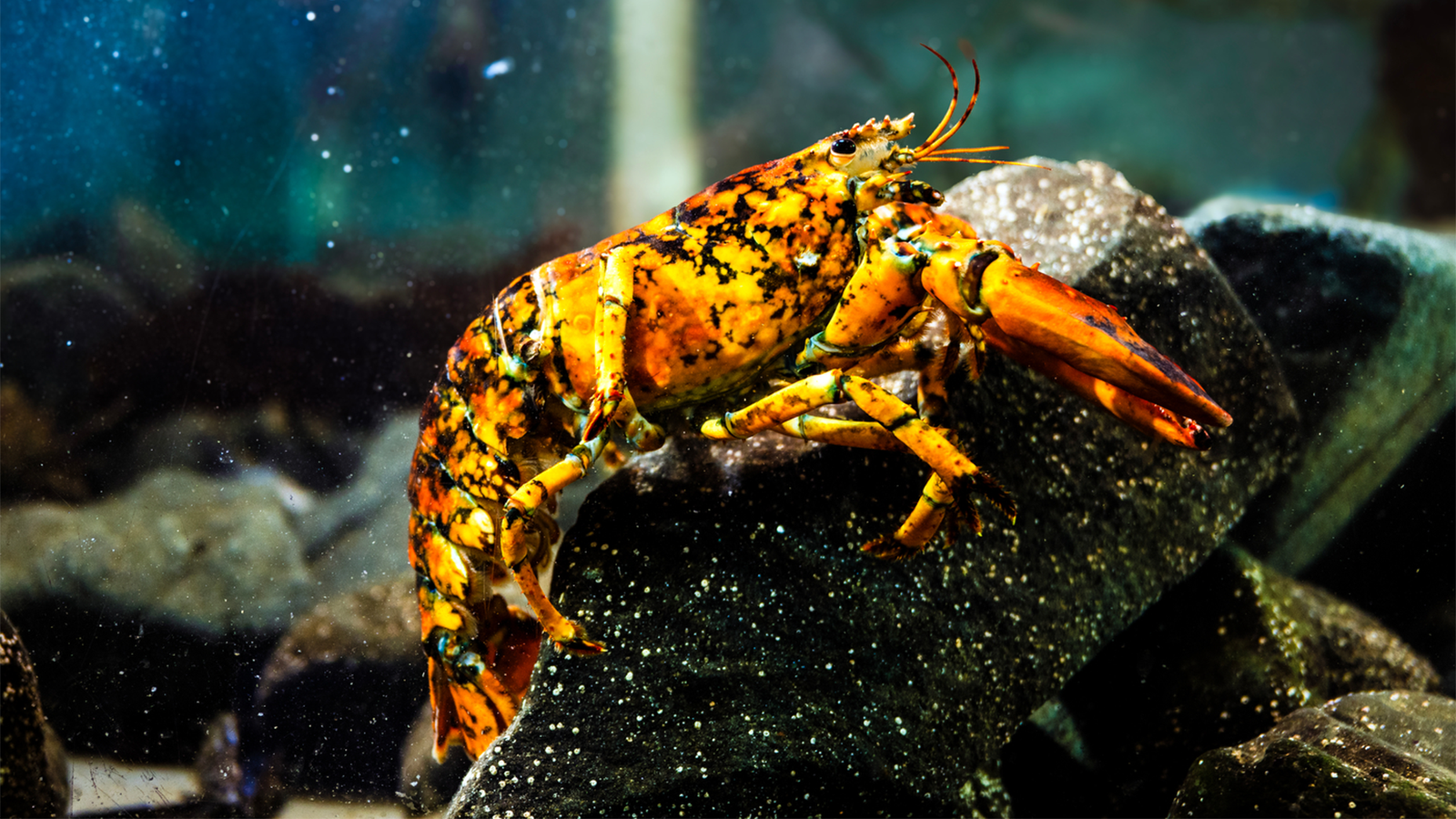A rare and seasonally-colored lobster is joining spiders, bats, and even some oozing fungi as some of nature’s best Halloween ambassadors. Meet Jackie (short for jack-o’-lantern), a rare orange and black lobster making her debut at Northeastern University’s Marine Science Center in Nahant, Massachusetts.
Jackie is a calico lobster and the odds of catching a crustacean like this are about one-in-20 million, according to the Marine Science Center outreach coordinator Sierra Munoz. This makes Jackie even more rare than the center’s other recent star, Neptune the blue lobster. The odds of catching one of them is about one-in-two million.
Jackie was caught off the coast of Massachusetts by Mike Tufts, a lobsterman who operates out of Gloucester.

“One day he sent me a message with a picture of this beautiful calico and asked if we had room in our tanks for another beautiful, rare lobster,” Munoz said in a statement. “I said, ‘Of course we do.’ It’s such a thoughtful—and fun—donation to our science education program.”
Rare lobsters like these are kept at the university so that scientists can study their genetics and better understand how to protect them in the face of climate change, overfishing, and other human-caused impacts.
Jackie’s unique colors due to a mixture of chemical compounds, including astaxanthin. Astaxanthin is what makes shrimp pink and (most) lobsters red.
“Normally, the lobsters that we see are reddish, brownish, or a little bit greenish,” Munoz explained. “In the calico lobster, the astaxanthin combines with other pigments and proteins in a really unique way that gives her this really rare kind of mottled or freckled look.”
Jackie is primarily a bright orange, with drizzles of black and some yellow throughout her shell. She also has some blue at her joints, due to the protein crustacyanin. This azure protein gives Neptune his cobalt shell.

The educational center about 45 minutes northeast of Boston offers community programs, field trips for local schools, and classroom outreach that gets to about 5,000 people per year. When visiting local elementary schools, Neptune even has his own special carrying case.
“Students have been getting a real kick out of it,” said Munoz. “Kids love learning about rare animals and how special they are and how many different types of life there are in the ocean. It really invites a lot of cool questions and connections.”
One of the questions she often is asked from kids is what Jackie’s babies would like. Would they share her calico coloring or look like more traditional lobsters?

Scientists don’t know what her offspring could look like, since calicos are so rare. However, since there is a genetic component to coloration, Munoz said that it is possible. More calico lobsters may be born than live long enough to be discovered, since their unusual coloring may make them stand out to prey.
Jackie and Neptune will be kept in separate tanks, as lobsters can be territorial. Winter flounder and moon snails will join them in their respective tanks. They also could be here for a very long time. If lobsters can avoid viruses or other physical ailments, they can live to be 100.
The post Rare 1-in-20-million calico lobster makes her spooky debut appeared first on Popular Science.

